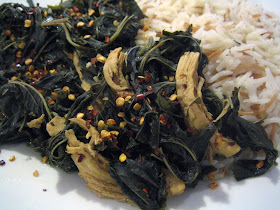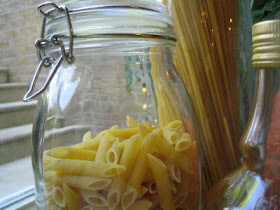
One of the reasons I started this blog was to show that there is more to Syrian food than Grilled meat and Mezze. So my main focus was to move away from the stereotypes and write about delicious, but little known outside a Syrian household, dishes. Nevertheless, Mezze is an integral part of Syrian cuisine and it deserves a place on my blog.
I am going to write a series of posts on different Mezze dishes. I set my self the silly target of one hundred and one recipes. I am not sure why 101 but it sounds good first of all. Secondly, I am sure I read somewhere that there is more than 400 types of Mezze. True or not, I think I should manage a quarter of that number.
Mezze (Maza as pronounced in Syria) strictly speaking means any food served next to alcohol, being some nuts in a bowl or something way more sophisticated. Usually small portions in small dishes. The term we use for all these small dishes when served next to BBQ or before your main is "Muqabelat". Literally means appetisers.
To start my series I chose my absolute favourite and the least known of all Mezze dishes: Keshkeh Khadra.
Keshkeh (or Kishk, Kishkah, ... etc) is a fermented mixture of grain and yogurt. The mixture is then dried and ground to a flour like powder. There is several ways you can use dry keshkeh. My favourite is a nice warming bowl of soup in a cold winter evening.
That was the dry variety. The dish I am talking about today is the fresh variety. "Khadra" in the name means green, to indicate freshness rather than colour. To prepare this dish you need to mix your ingredients and let the flavours develop over three days. As you can imagine it is lots of hassle for a tiny Mezze dish. I usually prepare a large patch, divide it into portions and freeze it. When I get it out of the freezer I freshen it with a spoon of yogurt then add my fresh ingredients.
Keshkeh Khadra
Bulgar Wheat
Yogurt
Walnut
Red onion
Parsley
Salt
Olive oil
To make your keshkeh you need to mix the Bulgar and the yogurt in a bowl. Start with 1 bulgar to 2 yogurt ratio. You will need to add more yogurt later and you will likely end up with 1:3. Cover and leave in a cool place overnight. Mix well in the morning and add more yogurt as the bulgar would have absorbed all the moisture. Cover and put in the fridge. Every twelve hours or so you need to mix, add a bit more yogurt, cover and return to the fridge. You need to repeat this for about three days till the flavour develop. The final consistency need to be similar to Mutabal (thinner than Hummus).
When your keshkeh mixture is ready, take a portion size. Mix with 1 table spoon fine chopped onion, 1 table spoon chopped parsley and 1 table spoon crushed walnuts. The flavour is very delicate so go easy on the salt or don't use any even.
Spread on a plate. Drizzle some olive oil and enjoy.










